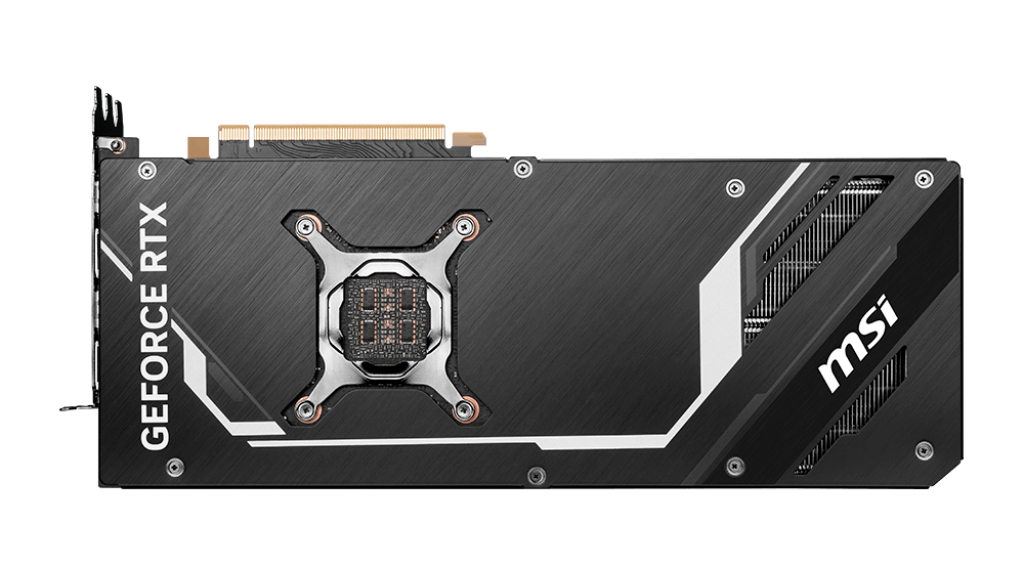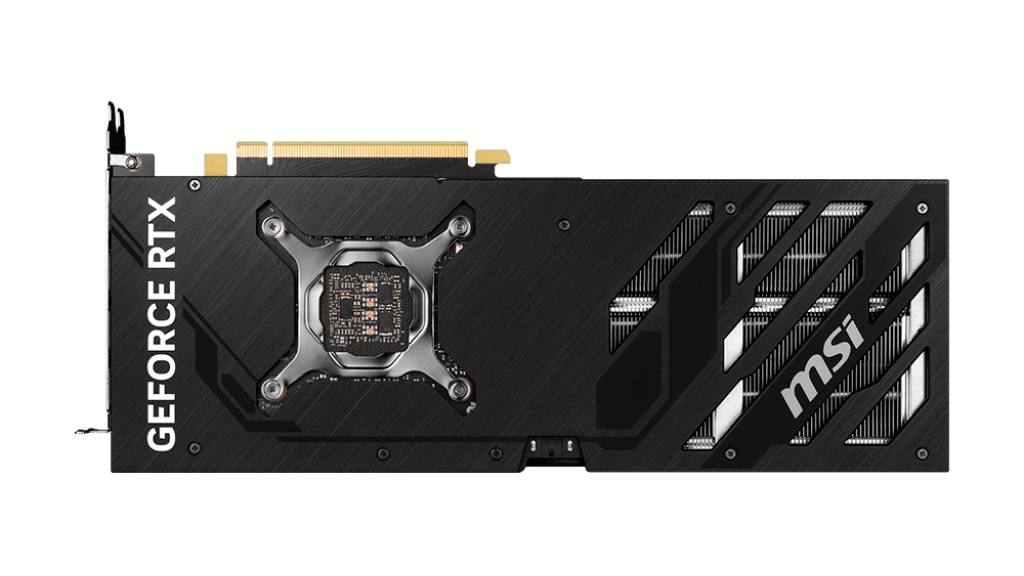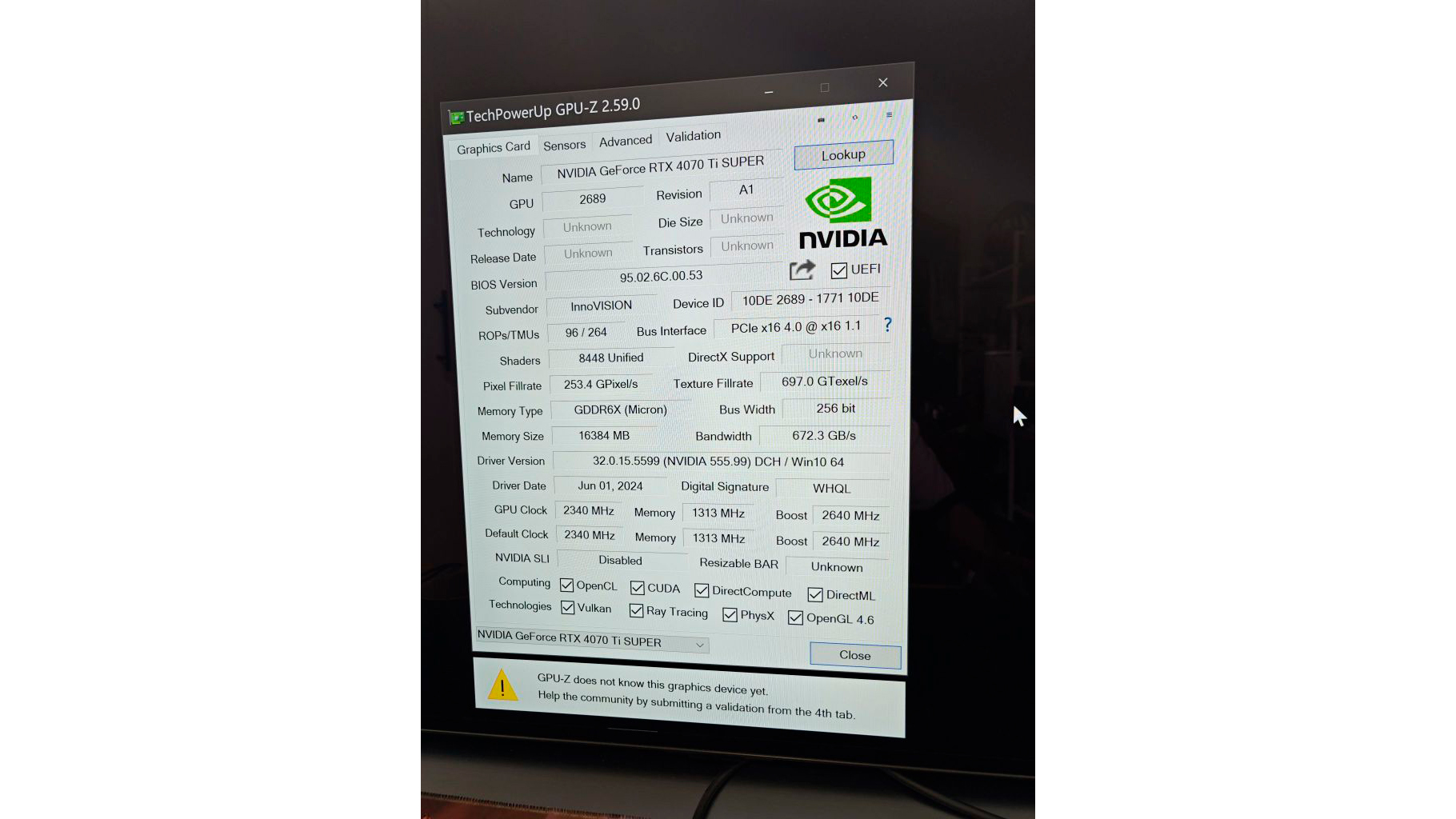
The Nvidia GeForce RTX 4070 Ti Super, one of the best graphics cards, won't be the only one of its kind on the market. MSI (via wxnod) recently launched the RTX 4070 Ti Super 16G Ventus 3X Black OC, which features different silicon than the original RTX 4070 Ti Super.
Nvidia first shipped the RTX 4070 Ti Super with AD103 silicon — the same chip used in the RTX 4080 and RTX 4080 Super. There's nothing surprising about Nvidia using the same die for multiple GPU variants, as we've covered in our Nvidia Ada Lovelace RTX 40-series overview. However, the renders for MSI's latest custom RTX 4070 Ti Super show that the graphics card sports a different die. The capacitor layout between the RTX 4070 Ti Super 16G Ventus 3X Black OC and the previously-released RTX 4070 Ti Super 16G Ventus 3X OC looks different. The former has four SP-Caps and two MLCC clusters, while the latter only has three SP-Caps, implying the move to a different silicon.
The RTX 4070 Ti Super's AD103 silicon has 66 SMs enabled out of the 80 available on the die. The configuration yields 8,448 CUDA cores, and it also has four 64-bit memory interfaces enabled. Nvidia's only other potential silicon would be a move up to the larger AD102 — AD104 used in the vanilla RTX 4070 Ti doesn't have enough memory controllers or SMs. The AD102 silicon on the other hand contains 144 SMs (18,432 CUDA cores) and six 64-bit memory controllers. That means the 'new' GeForce RTX 4070 Ti Super only has 45.8% of the AD102 SMs enabled, less than half of what it potentially offers — along with 66.7% of the memory interfaces.


The shift from AD103 to AD103 silicon for the 4070 Ti Super likely comes from a desire to make use of chips that can't meet the requirements for other more potent GPUs. Yields always vary, and over time Nvidia has likely acquired a few AD102 chips that can't even meet the requirements for RTX 4080 Super. However, the switch in silicon typically won't benefit the consumer.
The RTX 4070 Ti Super's specifications and performance remain the same. For example, MSI's GeForce RTX 4070 Ti Super 16G Ventus 3X Black OC shares the same 2,655 MHz boost clock as the GeForce RTX 4070 Ti Super 16G Ventus 3X OC. Power consumption varies slightly, at least on paper, though without in-depth testing we wouldn't want to try and draw any firm conclusions.
The RTX 4070 Ti Super 16G Ventus 3X Black OC (295W) has a 10W higher power consumption than the RTX 4070 Ti Super 16G Ventus 3X OC. That looks like the bigger AD102 die pulls a bit more power, or perhaps MSI just wants to give the newer variant a bit more headroom. Regardless, the RTX 4070 Ti Super still comes with a 16-pin power connector, and the extra 10W isn't something consumers need to fuss about. It also isn't an object of concern on the power supply's part, as MSI still recommends a 700W unit as a minimum for its GeForce RTX 4070 Ti Super 16G Ventus 3X Black OC.

The GeForce RTX 4070 Ti Super AD102 allows Nvidia to maximize silicon yield. Underperforming AD102 silicon that doesn't qualify, say, for a GeForce RTX 4080 Super (the original RTX 4080 has been phased out) can be used in the RTX 4070 Ti Super. It's not the first time Nvidia has utilized this tactic, and the vendor isn't the only one to do it.
There's no way to re-enable any of the fused off SMs, and hasn't been for many years, so you're still getting the same basic specs. Along with more SMs, the AD102 silicon also has more NVENC and NVDEC blocks for video processing, but the extra units can also be fused off. This likely represents the final round of clearing out Ada Lovelace silicon, as we expect the Nvidia Blackwell RTX 50-series GPUs to arrive in just a few more months.







